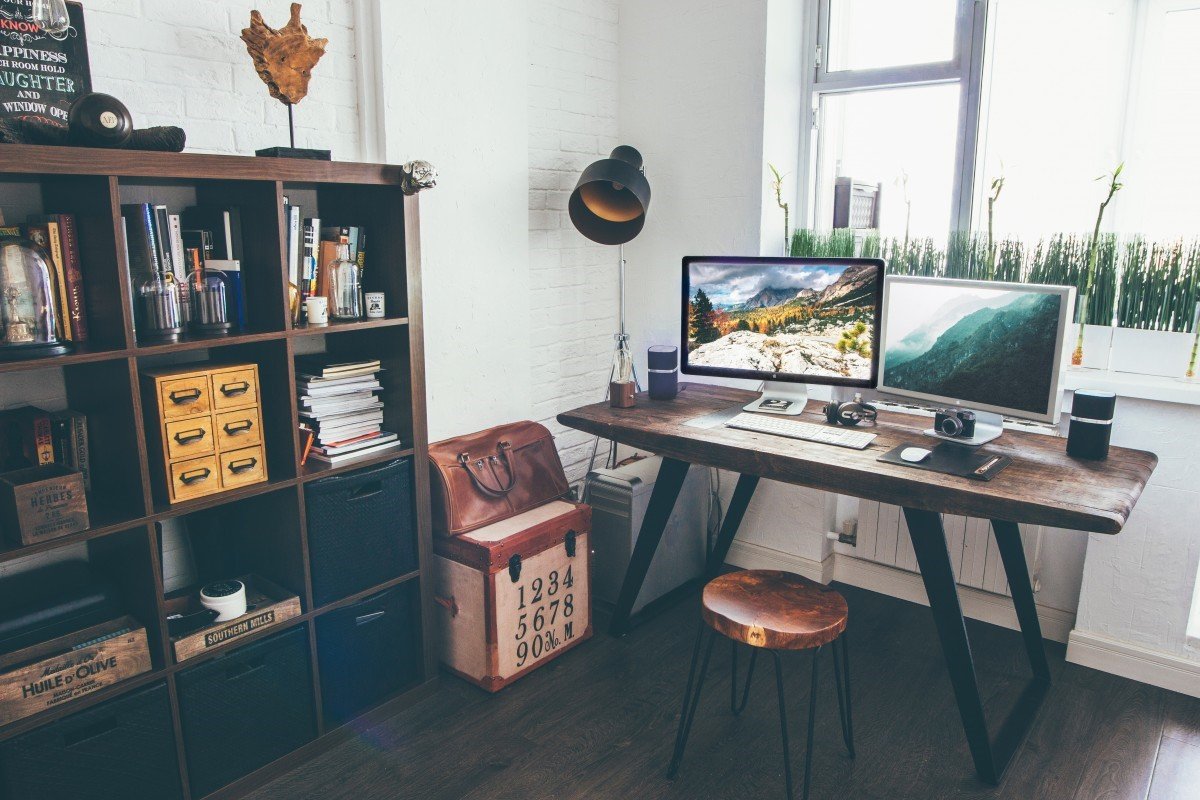Creating A Distraction-Free Office Space At Home
March 6, 2023

At this point, you should know how important creating a distraction-free office space at home since most of the workforce shifted in work from home setup.
Employers switched workers to remote work in the aftermath of COVID-19, and the numbers have risen dramatically in the last year. According to Zoom, a video conferencing provider, more than 300 million people use their software for calls every day as a result of the work-from-home boom.
While being at home might be relaxing, it can also make it easy to become stressed or distracted when your personal and professional lives collide. We’ve compiled some advice on how to set up a distraction-free workplace environment in your home so you can be the most productive and effective at work.
You don’t want to cause yourself eye strain by looking at a computer all day, especially if the lighting is strong overhead. If possible, locate your workspace where you will have enough natural light. You must, however, strike a balance between your demand for natural light and your desire for peace and quiet.
You may need to switch off between your most well-lit places and a more private space if your housemates frequent those areas.
Choose your workspace based on the tasks you need to complete. Checking emails, for example, maybe possible in a more open setting; diving into a project, on the other hand, may necessitate a quieter and more closed-off environment.
Natural light can also come from the outside. Working outside in your yard, on your porch, or even from a local park might be a wonderful change if you don’t get too distracted.
Working from home can be extremely productive and gratifying, or it can be extremely distracting and unpleasant. If you’re having trouble making it work, keep in mind that your expectations play a huge role in your work from home success.
You’ll probably find ways to put off and delay your task if you expect to be sidetracked. You undoubtedly confront even more distractions at your typical office – meetings, chatting colleagues, and so on – but you make it work. You may do it at home and be extremely successful; the first step is to get into a nice workplace and rhythm.
In dire circumstances, drastic methods are required. If you’re having problems finding a good workspace in your house, see if making some temporary changes to your furniture or storage places can provide you with the space you require.
A spacious closet or pantry might be a perfect office space at home when empty and packed. Switching your larger guest bed for a daybed or Murphy bed might provide you the space you need to spread out your materials and work productively in a guest bedroom with an office set-up alongside ordinary furnishings.
Packing and storing items away from home may appear to be a time-consuming alternative, but it’s surely easier and less expensive than trying to find a new home to get the space you require for work.
An open floor plan in a modern home might be ideal for family gatherings or for creating a sensation of spaciousness. However, if you have multiple people working from home, your open-plan house or apartment may make it difficult to identify suitable workstations.
Try to create as much physical separation as possible to get around this. It could be as simple as rearranging your desk or adding a white noise machine. Simultaneously, it can be as dramatic as converting a spare bedroom or closet into a private office space or constructing a garden “spare room” office.
Buyers are even anticipated to start looking for larger homes to offer themselves a little additional space for their work endeavors. Moving to a new house may seem dramatic, but if your firm is willing to offer remote work as a long-term alternative, it may make sense.
When it comes to keeping other family members or housemates out, a door lock might work wonders (kind of). It can, however, be a very effective psychological ruse.
You enter work mode when you hear your lock click into place. Even if you’re working in your bedroom, it becomes your office when the door is locked.
At home, time might pass swiftly.
There’s always something begging for your attention when you’re at home. You may see a few dishes that need to be put in the dishwasher when you stroll to your kitchen for a sip of water. Then you’ll probably have to wash your dishcloth. Then you realize the washer is full, and it’s easy to fall into the “If You Give a Mouse a Cookie” trap.
Set aside time when you’re working from home to concentrate on your work. Inform your housemates about them so they know when you should be left alone.
Work habits vary from individual to person. And not all work-at-home jobs are created equal. And, office space at home is created differently to suit one’s needs.
While one worker may be buried in code all day, another may be making sales calls on a regular basis. These various ways may necessitate various types of space.
A person who is on the phone all day may require a place that is well-lit for video conferencing; their schedule may also be more fragmented, requiring numerous breaks and the need to decompress between calls. A person who is often an autonomous contributor may demand a very quiet space with few interruptions to enter into deep-thinking mode.
Consider the times of day when you feel most productive, no matter how long your workday is. Then figure out how to make the most of that sensation while working from home.
Recent Article:





